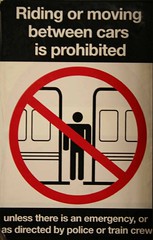When New York City Transit announced plans to install countdown clocks at 75 stations along the IRT numbered routes this year, most MTA watchers scoffed at the lofty goal. The MTA has long had problems bringing technology innovation to its 105-year-old system, and other subway systems had been enjoying the benefits of countdown clocks for decades. Well, today, the authority announced that it has exceed this goal by 25. When the countdown clock at Houston St. on the 1 went live this week, it was the 100th installed in 2010.
No longer will riders impatiently tap their feet while seeking out the dim glow of an advancing train piercing through the darkness of a tunnel. “For years, transit riders in other cities around the world have been looking at digital signs to know when the next bus or train is coming,” MTA Chairman and CEO Jay H. Walder said. “But in New York, we were left peering down a subway platform looking for headlights. We’re changing that and improving our customers’ experience one station at a time.”
The MTA anticipates that the full rollout along the numbered lines will be completed by mid-2011. At that point, the authority will assess ways to bring this technology to the B Division lettered lines. “This is all about providing information to our customers who may see similar systems in other locations and ask, ‘Why not here?’ Well, we asked ourselves the same thing and we are now moving briskly ahead with this project,” NYC Transit President Thomas Prendergast said in a statement. Even as the MTA faces precarious financial times, it’s good to see forward progress.






 I’ll let you decide if this one belongs in the “New York politicians will complain about anything” category, but listen: Even though it’s illegal to
I’ll let you decide if this one belongs in the “New York politicians will complain about anything” category, but listen: Even though it’s illegal to 







 (Rockaway Park Shuttle)
(Rockaway Park Shuttle)